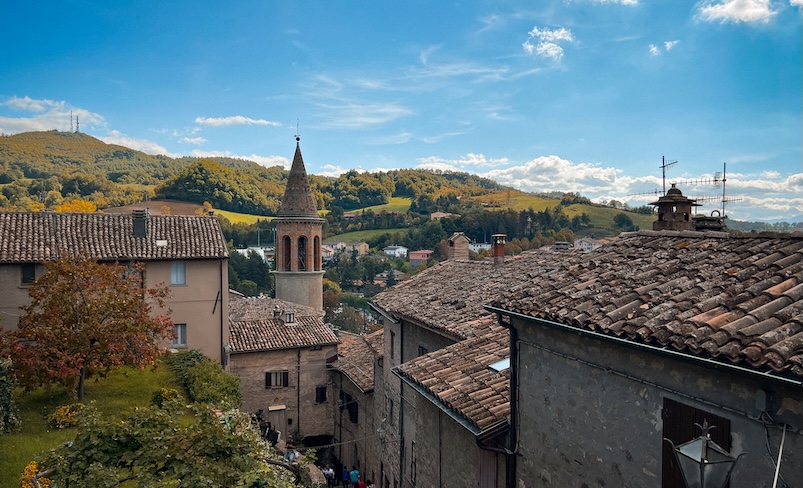
You know Emilia-Romagna for its famous cities like Bologna, Rimini and Ravenna. But the real magic? It hides in the hills, in the kind of places locals keep for themselves.
These are the hidden gems of Emilia Romagna: tiny borghi where cobblestones shine after rain, old ladies swap gossip in the piazza, and the smell of baking piadina drifts out of a doorway.
One of them is Sant’Agata Feltria—a fairy-tale hill village perched above the Marecchia valley. It’s compact, welcoming, and exactly the kind of spot that turns a simple day trip into a favourite memory.
Think cobbled lanes, a medieval fortress on the skyline, a wooden theatre that’s older than many countries, and—when autumn arrives—the scent of white truffle drifting through the streets.
If that sounds like your pace, keep reading. This guide will show you how to make the most of a slow, delightful day in Sant’Agata Feltria.
Fascinating History of Sant’Agata Feltria
Sant’Agata Feltria may look like an ivory-toned postcard, yet for a full millennium, it held strategic weight far bigger than its footprint.
Perched on a sandstone bastion along the old Florentina-Rimini road, the village commanded the only safe passage between the Adriatic and the Montefeltro uplands.
Whoever controlled the outcrop controlled the grain convoys, the salt caravans and—when times were darker—the mercenary companies that marched across central Italy.
Even after papal troops, Napoleonic regiments and Risorgimento volunteers had all taken their turn at the gates, Sant’Agata never surrendered its identity.
Farmers still cultivated the same chestnut terraces, truffle hunters still worked the oak groves, and in 1605 townspeople pooled donations to build Teatro Angelo Mariani, now recognised as Italy’s oldest all-wooden playhouse.
In 2009 a local referendum transferred the settlement from Pesaro-Urbino to Rimini province, but the cultural compass stayed fixed: Romagnolo food, Montefeltro heritage, and an unbroken rhythm of market days that anchor village life.
What to Do in Sant’Agata Feltria
1. Grab a Coffee at Piazza Garibaldi
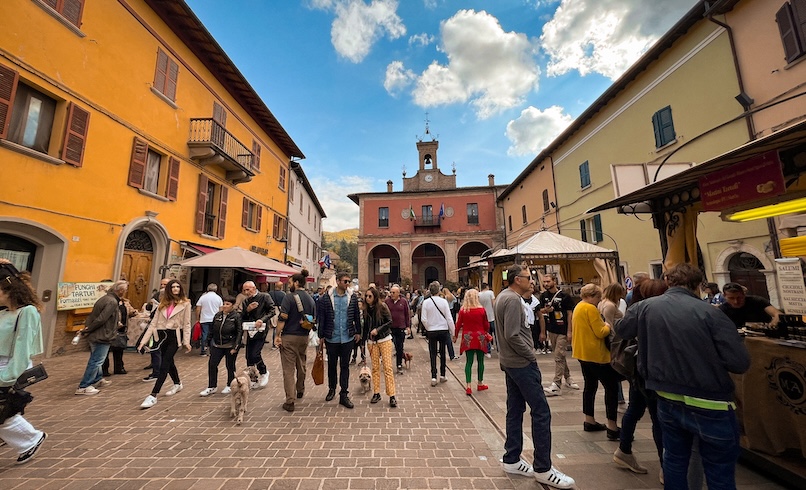
Begin your exploration where everything (and everyone) eventually converges – at Piazza Garibaldi.
The square’s apricot façades catch the early sun, while a modest belfry marks the hours with a bell that sounds more neighbourly than ceremonial.
Order a coffee and a typical Italian breakfast at a local bar, stand at the counter like a local, then migrate to the outdoor tables and watch the morning unfurl: children playing outside, hunters comparing truffle finds, nonnas haggling over porcini the size of baseballs.
2. Take a Look at the Church of San Girolamo
Just two minutes off the main street stands San Girolamo, a 16-century church that once anchored a modest Franciscan convent.
Push open the heavy wooden door, and a faint scent of beeswax greets you; sunlight filters through high windows, catching fragments of late-Mannerist frescoes along the nave.
Step left into the adjoining cloister (open weekends and festival days).
Arcaded walkways ring a square of grass and lavender, and a tiny Museo delle Arti Rurali hides in one corner—spinning wheels, shepherd flutes, even a copper still once used for grappa
3. Admire the View From Rocca Fregoso
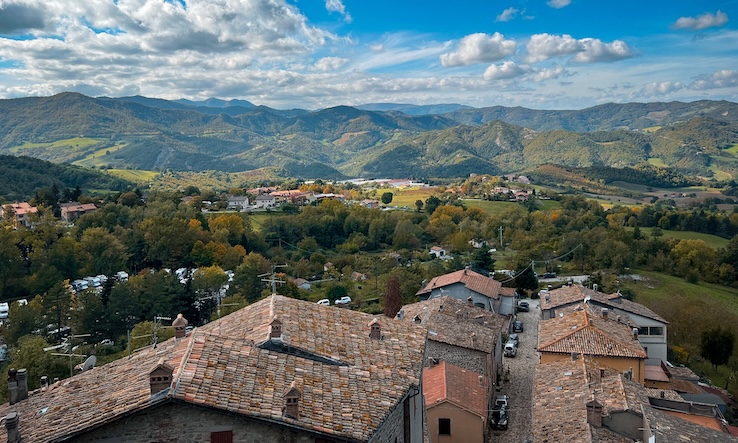
Climb the lane behind the piazza and you hit the Rocca Fregoso fortress—part austere medieval citadel, part whimsical Rocca delle Fiabe with interactive fairy-tale exhibits.
The real magic, though, is outside: step onto the ramparts and the Marecchia Valley unfurls like a green quilt.
4. Visit Italy’s Oldest All-Wooden Theater
Italy’s oldest all-wooden theater, Angelo Mariani Theater, is a perfume box of larch balconies, velvet seats, and candle-lit acoustics.
Built in 1605 entirely from larch and cherry wood, the theatre is an acoustic jewel that once hosted travelling opera troupes.
Stand in the stalls, look up: three tiers of balconies curve around you like a miniature La Scala, their original fresco medallions intact.
The theatre runs a seasonal programme of chamber music, drama and community recitals, and the balconies fill quickly when the lights go down.
You can also visit it as a historic site: Tuesday–Sunday, 10:00–12:00 and 15:00–18:00 (closed Monday).
5. Try Local Delicacies at the Truffle Fair
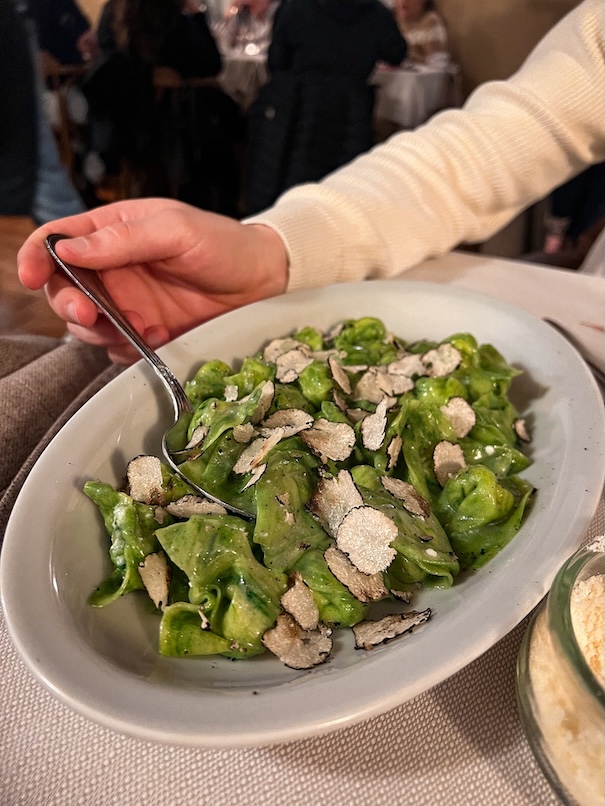
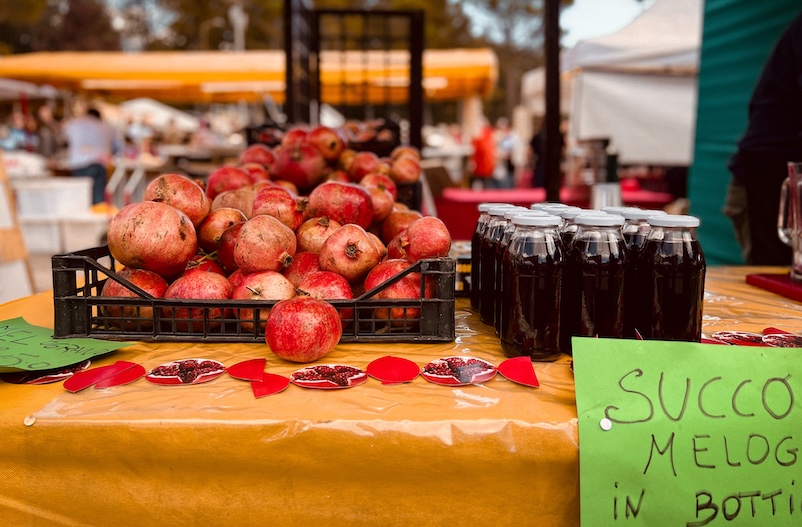
Plan your trip around Sant’Agata’s main signature event – Truffle Fair.
On the four Sundays in October, the borgo becomes truffle country: hunters arrive with their dogs, chefs run tastings, and the air carries that buttery, damp-oak aroma you only get in autumn.
Park at the Via Pantani parking lot and head right to the food stalls and shopping stands.
What to buy at the Truffle Fair (and how to choose well)
Wondering what to buy at the Truffle Fair? Oh, the list is long (and it’s not only truffles)!
Tartufo bianco (Tuber magnatum Pico)
October’s star: pale, slightly marbled flesh and an intense, elegant aroma. Choose firm, dry pieces; have them opened for a sniff, then sealed sottovuoto for travel.
Tartufo nero d’estate (Scorzone)
More affordable and gentler, with a rough black rind. Ideal shaved over eggs or folded into butter for toast and tagliolini.
Tartufo bianchetto (Tuber borchii)
Another truffle cousin with a livelier, garlicky bouquet. Best grated into sauces or scrambled eggs.
Beyond truffles: formaggio di fossa & porcini
Cave-aged pecorino with mossy, walnut notes and fresh or dried porcini—caps firm, gills pale, scent nutty.
Market nibbles & sips
Like any good Romagna market, you’ll also find a wide selection of olives and crunchy taralli to nibble as you browse. If you a stand pressing pomegranates, order a spremuta di melograno—bright, refreshing, perfect after tastings
Food to Try in Sant’Agata Feltria
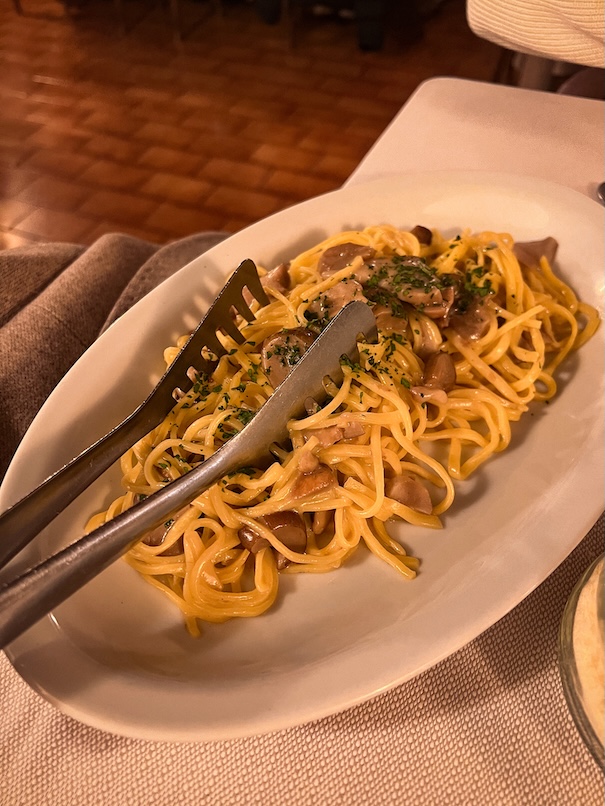
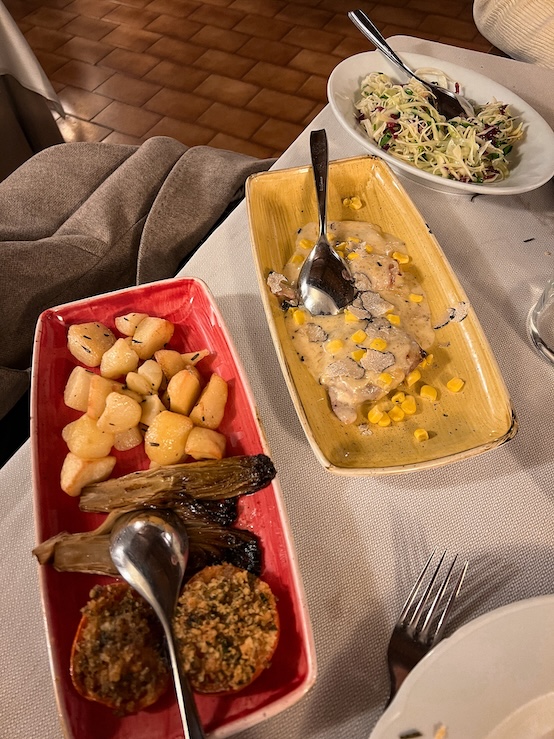
Sant’Agata Feltria, just like many other Emilia-Romagna villages, eats with the seasons: mushrooms after the first rain, cheeses that taste faintly of cellar stone, breads still crackling from the oven, and in October, the white truffle that perfumes the whole valley.
Here’s what to order when you sit down.
White-truffle cappelletti
Spinach-tinted pasta pillows with a mild ricotta-herb filling, swirled in butter and finished at the table with shavings of Tuber magnatum truffle. The aroma is immediate and generous.
Spianata santagatese
The village flatbread: flour, spring water, olive oil and rosemary baked in a wood oven until the crust crackles and the herb oils scent the street. Eat it warm, torn by hand; it’s perfect alongside cold cuts or as a walking snack between sights.
Degustazione contadina
A countryside board built for sharing—farro salad, grilled polenta cubes, curls of herb focaccia and a ramekin of pickled vegetables. Ideal at aperitivo hour; pair with a light red and it quietly becomes dinner.
Tagliolini ai porcini
After autumn rain, porcini arrive meaty and fragrant. Fresh egg noodles, rolled thin, are tossed with sautéed mushrooms and a whisper of parsley: pure forest in a forkful. Best from late September through November.
Veal escalope with truffle cream
A butter-soft cutlet under a pale, silky sauce dotted with black-truffle flecks, often paired with sweet kernels of late-season corn. Indulgent without being heavy—save this for cooler evenings when you’re lingering in the piazza.
How to Get to Sant’Agata Feltria
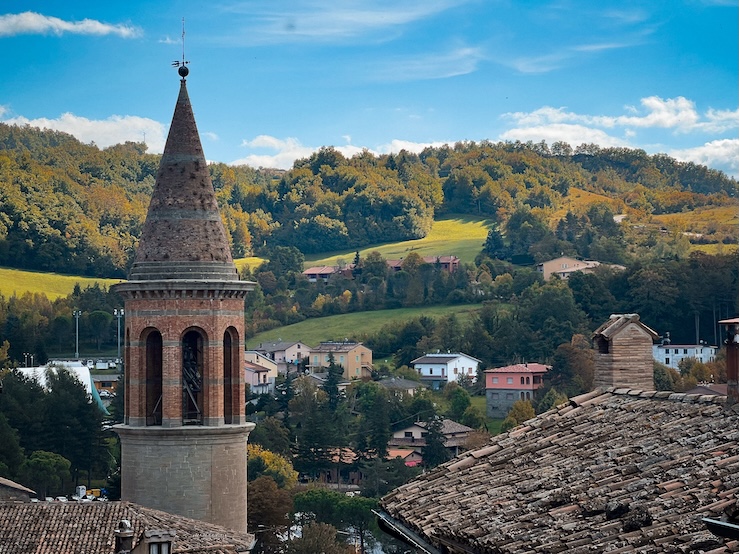
Yes, you can stitch together a Bologna–Rimini train and a rural bus, but honestly? Renting a car unlocks the full fair-tale.
Pick up wheels in Rimini or Bologna, cue an Apennine playlist, and take the SP 258. In forty-five minutes you trade beach traffic for chestnut forests and the first glimpse of the castle turret.
Free parking waits just outside the gate on Via Pantani; from there it’s a five-minute cobbled climb into another century.
FAQs
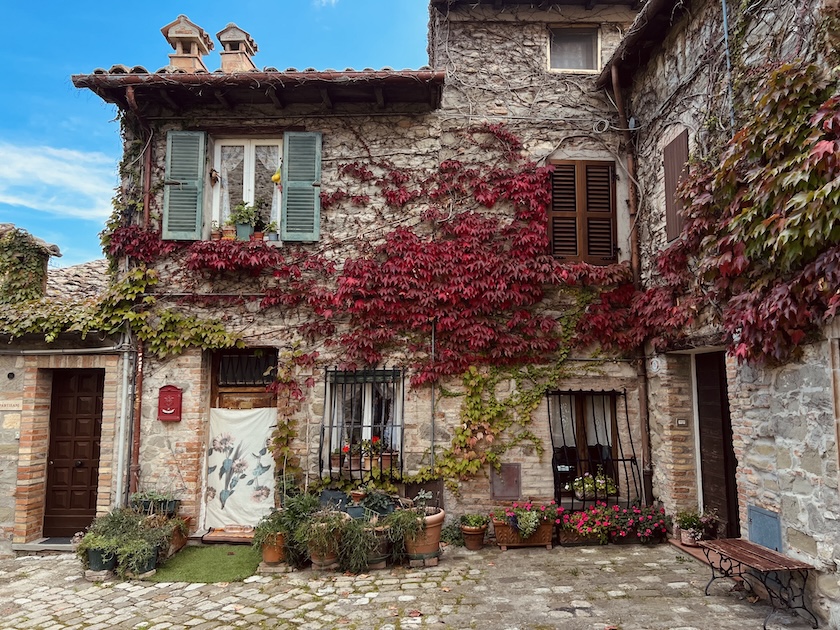
Is Sant’Agata Feltria worth visiting?
Yes. In one compact day you can see a medieval fortress (Rocca Fregoso), visit Italy’s oldest all-wooden theatre, stroll a cloistered church, and—if it’s October—taste white truffle at the national fair. It’s a classic borgo with real-life rhythm, not a set piece.
When is the best time to visit Sant’Agata Feltria?
October for the Truffle Fair (all Sundays) or April–June for mild weather, hiking, and quieter streets. Summer is lovely in the evenings when the hill breeze kicks in.
How much time do I need?
A full day covers the piazza, church of San Girolamo, Rocca Fregoso, the theatre, and an unhurried lunch. Add a second half-day if you want a gentle hike to nearby Petrella Guidi.
Do I need a car?
You can combine train + bus via Rimini, but a rental car makes it effortless and scenic (SP 258). Park outside the centre in the free Via Pantani lot and walk five minutes—ZTL rules keep the old town pleasantly car-light.
What food should I try in Sant’Agata Feltria?
In season, try white-truffle cappelletti or tagliolini ai porcini; year-round, look for spianata santagatese, formaggio di fossa, and bustrengo.
At the truffle fair, choose firm, fragrant pieces (labelled Tuber magnatum Pico), ask to seal sottovuoto, and bring cash for market stalls.



